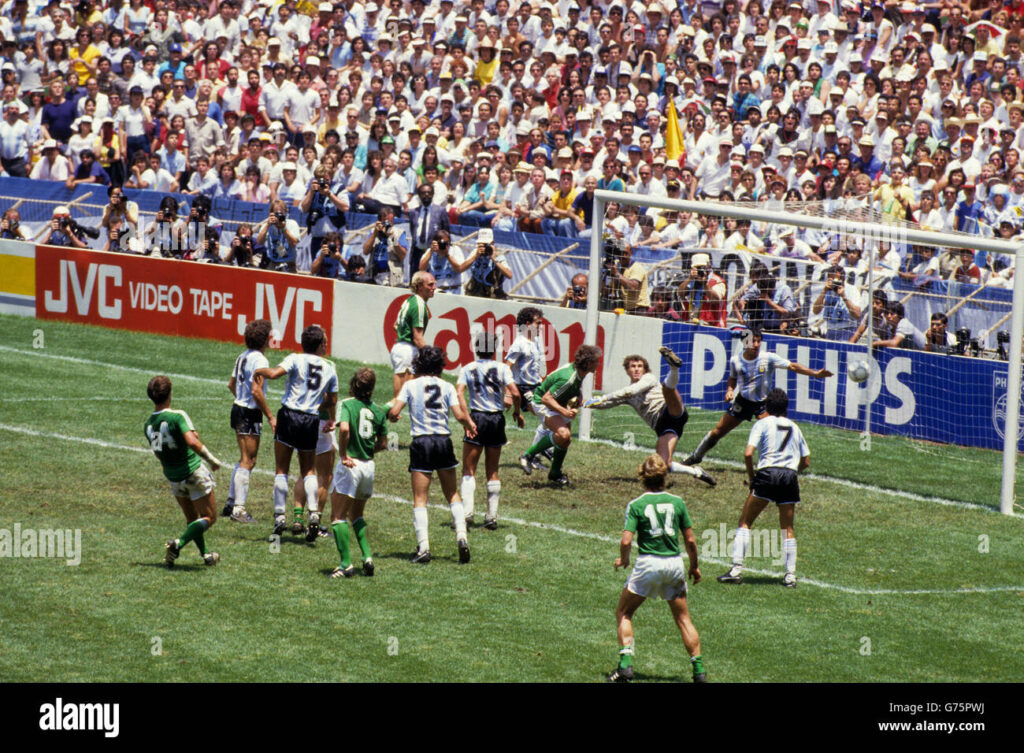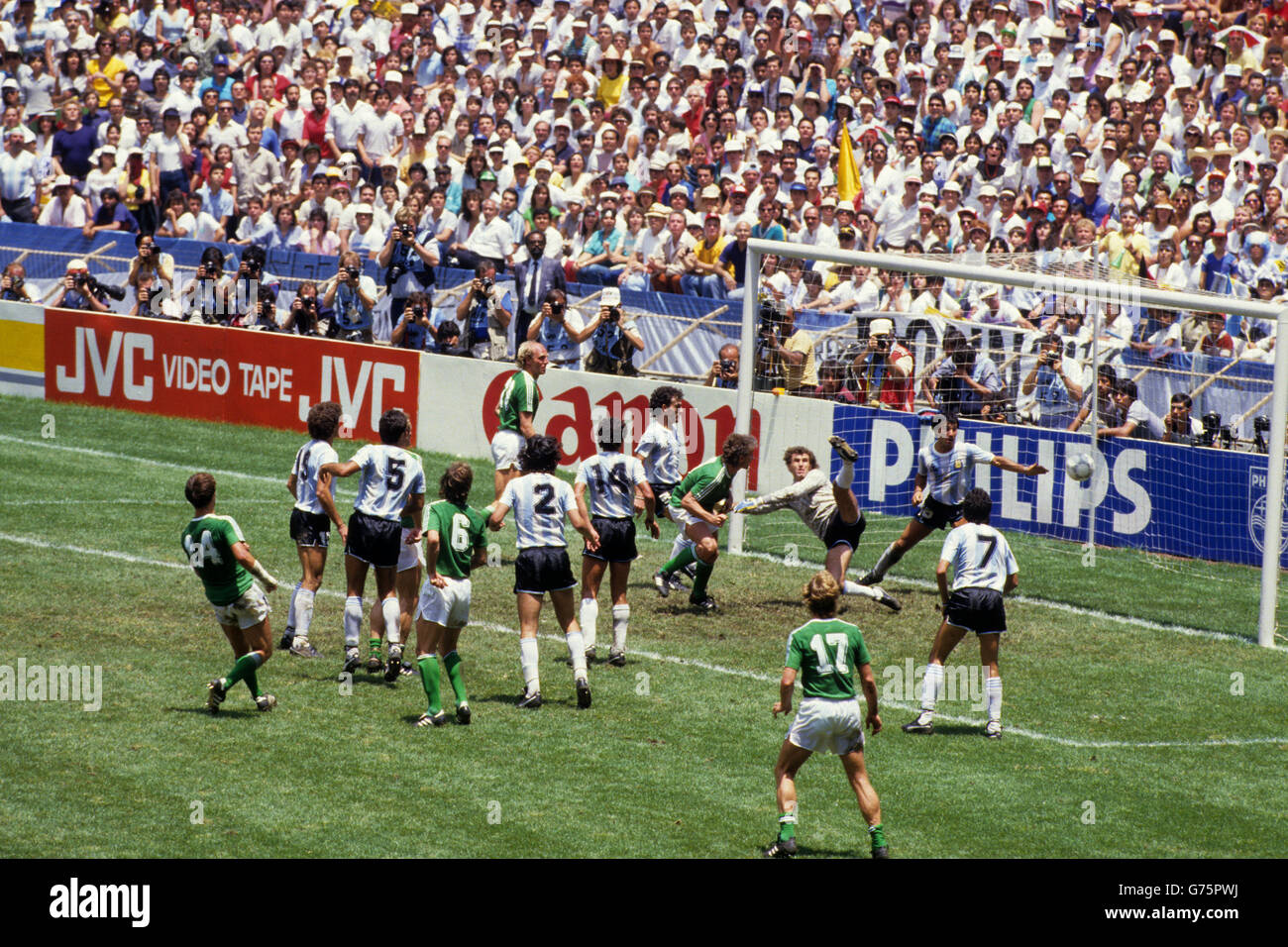
Mexico ’86: A Deep Dive into the 1986 Football World Cup
The 1986 Football World Cup, hosted by Mexico, remains a landmark tournament in football history. Held from May 31 to June 29, 1986, it was a spectacle of skill, drama, and unforgettable moments. This article provides an in-depth look at the 1986 Football World Cup, exploring its background, key players, memorable matches, and lasting legacy.
Background and Hosting
Colombia was initially selected to host the 1986 Football World Cup, but due to economic difficulties and inability to meet FIFA’s requirements, they withdrew in 1982. Mexico was chosen as the replacement host in May 1983, becoming the first nation to host the tournament twice. This decision presented its own challenges, as Mexico had to rebuild infrastructure and demonstrate its ability to stage a successful event.
Despite the devastating earthquake that struck Mexico City in September 1985, the country persevered, showcasing resilience and determination to host the 1986 Football World Cup. The tournament was seen as a symbol of national pride and a testament to Mexico’s ability to overcome adversity.
Qualification and Participating Teams
The 1986 Football World Cup featured 24 national teams, representing various confederations across the globe. Qualifying rounds were fiercely contested, with established footballing nations and emerging talents vying for a spot in the finals. Notable teams included Argentina, Brazil, West Germany, France, Italy, and England, each bringing their unique style and aspirations to the tournament.
The draw for the group stage took place in December 1985, dividing the teams into six groups of four. The top two teams from each group, along with the four best third-placed teams, advanced to the knockout stage, setting the stage for thrilling encounters and dramatic eliminations.
Key Players and Teams to Watch
The 1986 Football World Cup was defined by the brilliance of individual players, particularly Diego Maradona. The Argentine captain was at the peak of his powers, mesmerizing audiences with his exceptional dribbling, vision, and goal-scoring ability. His performances in the tournament cemented his status as one of the greatest footballers of all time.
Other notable players included Michel Platini of France, Karl-Heinz Rummenigge of West Germany, and Gary Lineker of England. Each player played a crucial role in their team’s campaign, contributing to the excitement and competitiveness of the tournament. The 1986 Football World Cup was a showcase of global footballing talent.
Memorable Matches and Moments
The 1986 Football World Cup was filled with memorable matches and unforgettable moments. One of the most iconic moments occurred in the quarter-final match between Argentina and England. Diego Maradona scored two goals that would be forever etched in football history: the “Hand of God” goal and the “Goal of the Century.” These moments showcased Maradona’s genius and controversial nature, adding to the tournament’s mystique.
The semi-final match between Argentina and Belgium was another highlight, with Maradona scoring two brilliant goals to secure Argentina’s place in the final. The final itself, between Argentina and West Germany, was a thrilling encounter, with Argentina emerging victorious after a hard-fought battle. [See also: World Cup Finals: A Historical Overview]
The Final: Argentina vs. West Germany
The final of the 1986 Football World Cup pitted Argentina against West Germany at the Estadio Azteca in Mexico City. Argentina, led by Diego Maradona, had captivated the world with their attacking flair and determination. West Germany, known for their tactical discipline and resilience, were determined to spoil Argentina’s party.
The match was a tense affair, with both teams creating chances. Argentina took a 2-0 lead, but West Germany fought back to level the score. In the dying minutes, Jorge Burruchaga scored the winning goal for Argentina, securing their second World Cup title. The victory sparked jubilation across Argentina and solidified Maradona’s legacy as a national hero.
The “Hand of God” and the “Goal of the Century”
The quarter-final match between Argentina and England is arguably the most controversial and memorable game in World Cup history, thanks to Diego Maradona’s two goals. The first, known as the “Hand of God,” saw Maradona punch the ball into the net past England goalkeeper Peter Shilton. The referee did not see the infraction, and the goal stood, sparking outrage and debate.
Just minutes later, Maradona scored a goal that is widely regarded as the “Goal of the Century.” He dribbled past multiple England players, showcasing his incredible skill and agility, before slotting the ball into the net. These two goals, so contrasting in their nature, encapsulated the brilliance and controversy that defined Maradona’s career and the 1986 Football World Cup.
Tactical Innovations and Formations
The 1986 Football World Cup saw the emergence of new tactical approaches and formations. Many teams adopted a more defensive approach, focusing on solidifying their backline and hitting opponents on the counter-attack. The 3-5-2 formation became increasingly popular, allowing teams to control midfield and provide width in attack.
Argentina’s success was largely attributed to their tactical flexibility and ability to adapt to different opponents. Coach Carlos Bilardo built the team around Maradona, allowing him the freedom to express his creativity while ensuring the team remained defensively solid. This tactical approach proved to be highly effective, leading Argentina to victory.
The Impact of the 1986 World Cup on Football
The 1986 Football World Cup had a significant impact on the sport, influencing tactical trends, player development, and the global popularity of football. Maradona’s performances inspired a generation of footballers, and his style of play became a benchmark for aspiring players around the world.
The tournament also highlighted the importance of tactical innovation and adaptability. Teams that were able to adjust their strategies based on their opponents’ strengths and weaknesses were more likely to succeed. The 1986 Football World Cup demonstrated that tactical intelligence is just as important as individual skill.
Lasting Legacy and Cultural Significance
The 1986 Football World Cup left a lasting legacy, both in Mexico and around the world. The tournament showcased Mexico’s ability to host major international events and boosted the country’s image on the global stage. The memories of the tournament continue to resonate with football fans, who remember the excitement, drama, and unforgettable moments.
The 1986 Football World Cup is also remembered for its cultural significance. The tournament brought people together from different backgrounds and cultures, united by their love of football. It served as a reminder of the power of sport to transcend borders and promote understanding and friendship. The 1986 Football World Cup was more than just a sporting event; it was a cultural phenomenon.
Conclusion
The 1986 Football World Cup was a tournament of unparalleled drama, skill, and controversy. Diego Maradona’s performances cemented his status as a footballing legend, and the tournament produced numerous memorable matches and moments. The 1986 Football World Cup left a lasting legacy, influencing tactical trends, player development, and the global popularity of football. It remains a cherished memory for football fans around the world, a testament to the enduring power of the beautiful game. The 1986 Football World Cup was a true spectacle and remains a highlight in the history of the sport. Remembering the 1986 Football World Cup allows us to appreciate the rich history and global appeal of the world’s most popular sport. The 1986 Football World Cup truly was a remarkable event.
